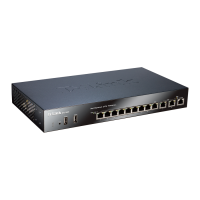List of Figures
1.1. Packet Flow Schematic Part I ...........................................................................24
1.2. Packet Flow Schematic Part II ..........................................................................25
1.3. Packet Flow Schematic Part III .........................................................................26
1.4. Expanded Apply Rules Logic ............................................................................27
3.1. VLAN Connections ...................................................................................... 116
3.2. An ARP Publish Ethernet Frame ..................................................................... 130
3.3. Simplified NetDefendOS Traffic Flow ............................................................. 138
4.1. A Typical Routing Scenario ........................................................................... 166
4.2. Using Local IP Address with an Unbound Network ............................................ 168
4.3. A Route Failover Scenario for ISP Access ......................................................... 174
4.4. A Proxy ARP Example ..................................................................................181
4.5. The RLB Round Robin Algorithm ................................................................... 191
4.6. The RLB Spillover Algorithm ......................................................................... 192
4.7. A Route Load Balancing Scenario ................................................................... 194
4.8. A Simple OSPF Scenario ............................................................................... 197
4.9. OSPF Providing Route Redundancy ................................................................. 198
4.10. Virtual Links Connecting Areas .................................................................... 202
4.11. Virtual Links with Partitioned Backbone ......................................................... 203
4.12. NetDefendOS OSPF Objects ........................................................................204
4.13. Dynamic Routing Rule Objects ..................................................................... 211
4.14. Multicast Forwarding - No Address Translation ................................................ 222
4.15. Multicast Forwarding - Address Translation .................................................... 224
4.16. Multicast Snoop Mode ................................................................................. 226
4.17. Multicast Proxy Mode .................................................................................226
4.18. Non-transparent Mode Internet Access ........................................................... 238
4.19. Transparent Mode Internet Access .................................................................238
4.20. Transparent Mode Scenario 1 ........................................................................240
4.21. Transparent Mode Scenario 2 ........................................................................241
4.22. An Example BPDU Relaying Scenario ........................................................... 244
5.1. DHCP Server Objects ................................................................................... 253
6.1. Deploying an ALG ....................................................................................... 266
6.2. HTTP ALG Processing Order ......................................................................... 269
6.3. FTP ALG Hybrid Mode ................................................................................. 271
6.4. SMTP ALG Processing Order ......................................................................... 282
6.5. Anti-Spam Filtering ......................................................................................284
6.6. PPTP ALG Usage ........................................................................................ 290
6.7. TLS Termination .......................................................................................... 317
6.8. Dynamic Content Filtering Flow ..................................................................... 323
6.9. IDP Database Updating .................................................................................344
6.10. IDP Signature Selection ............................................................................... 346
7.1. NAT IP Address Translation .......................................................................... 364
7.2. A NAT Example .......................................................................................... 366
7.3. Anonymizing with NAT ................................................................................ 368
7.4. The Role of the DMZ ....................................................................................373
8.1. Normal LDAP Authentication ........................................................................395
8.2. LDAP for PPP with CHAP, MS-CHAPv1 or MS-CHAPv2 ..................................396
9.1. The AH protocol .......................................................................................... 431
9.2. The ESP protocol ......................................................................................... 431
9.3. PPTP Client Usage ....................................................................................... 465
9.4. SSL VPN Browser Connection Choices ............................................................ 469
9.5. The SSL VPN Client Login ............................................................................ 470
9.6. The SSL VPN Client Statistics ........................................................................ 471
9.7. Certificate Validation Components .................................................................. 475
10.1. Pipe Rules Determine Pipe Usage ..................................................................487
10.2. FwdFast Rules Bypass Traffic Shaping ........................................................... 488
10.3. Differentiated Limits Using Chains ................................................................ 491
10.4. The Eight Pipe Precedences ..........................................................................492
10.5. Minimum and Maximum Pipe Precedence ....................................................... 494
10

